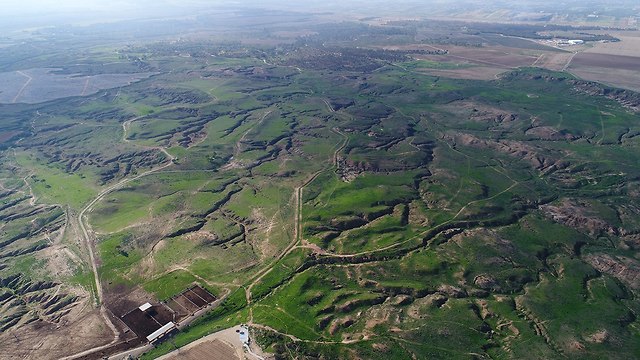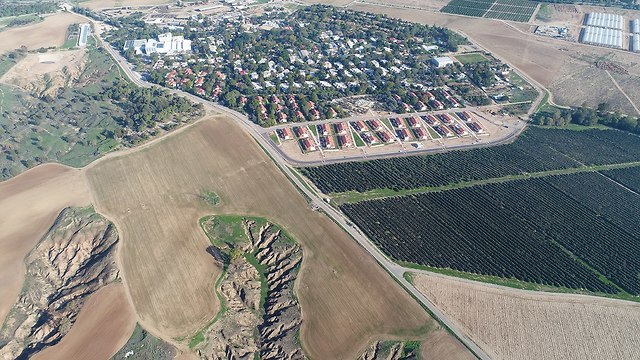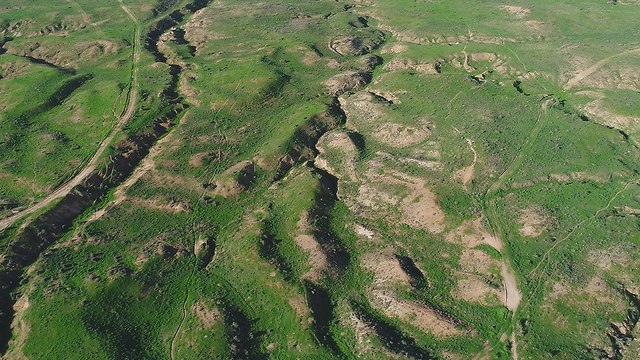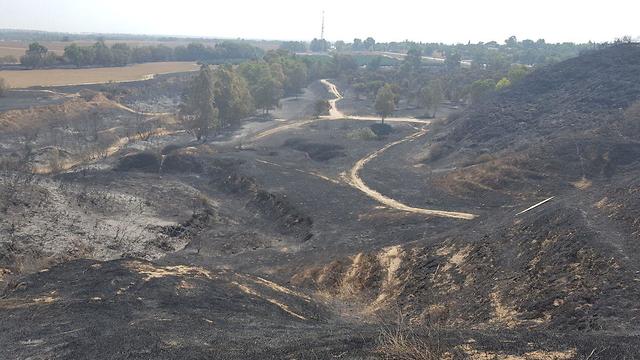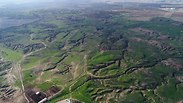
Over the summer, the sight of blackened earth and ashes where there was once an abundance of natural greenery - until the incendiary kite and balloon terror consumed the fields and vegetation in the Gaza vicinity, was depressing. But nature has its way of rebirth and the recent rainfall has washed away the ashes replacing the depressing black with optimistic green.
Dozens of millimeters of rain has fallen in recent weeks and have almost completely eliminated the scars of the fires caused by the thousands of fiery kites and balloons launched into Israel by Palestinians in Gaza as part of the their "march of return." Thousands of dunams of agricultural land and nature reserves were destroyed.
The locations that suffered the most fire damage were the Be'eri Crater, the Be'eri woodlands, the Kissufim woodlands and Tel Gama, beautiful areas that attract many vacationers. In the Be'eri Crater, for example, more than 80 percent of the land was burnt and the cattle, fed by the grass, were transferred to nearby pens.
But now, after the rain, the scorched earth is carpeted with green. Cows can graze again and they roam freely around the area enjoying the grass. The agriculture too is recovering. Thousands of acres of wheat have been planted in recent days in the same fields that were burned last summer.
In the Gaza vicinity of the northern Negev, people know that the cease-fires are fragile, but they also note that when the land is soaked in rainwater, there is no chance of a fire, so the Palestinians do not have the option of incendiary balloon terror during this season of the year.
"The forecasts this year predict a harbinger of rain, and this is welcome, certainly in an agricultural area like ours," said Livnat Ganzburg, a tourism coordinator in the Gaza region. “The northern Negev is undergoing a big change, from the black of the fires to green vegetation; a drastic and exciting change. The view of burnt expanses has not been pleasant but we always knew that the rain would come and wash away everything and the vegetation will grow again.
“We are opening a new chapter in our lives and this is the time to call upon the citizens of Israel to come visit this beautiful region,” she continued. “There were rumors that the fires damaged the blossoming of the anemones, this is not true, and in a few months we expect a spectacular flowering of anemones. We only hope for calm on the security front and lots of rain.”
Evyatar Kipnis of Kibbutz Be'eri who is in charge of the kibbutz firefighting team said: "The big test will be this coming summer. It is true that now everything is green and beautiful, but every blade of grass that grows is a potential kindling for fires next summer. The Palestinians know this… Unfortunately, as long as there is no political solution and everything is stuck, the situation with Gaza will be the same as it was. In the summer we will have black and in the winter we will have green. Meanwhile let us enjoy the green.”













